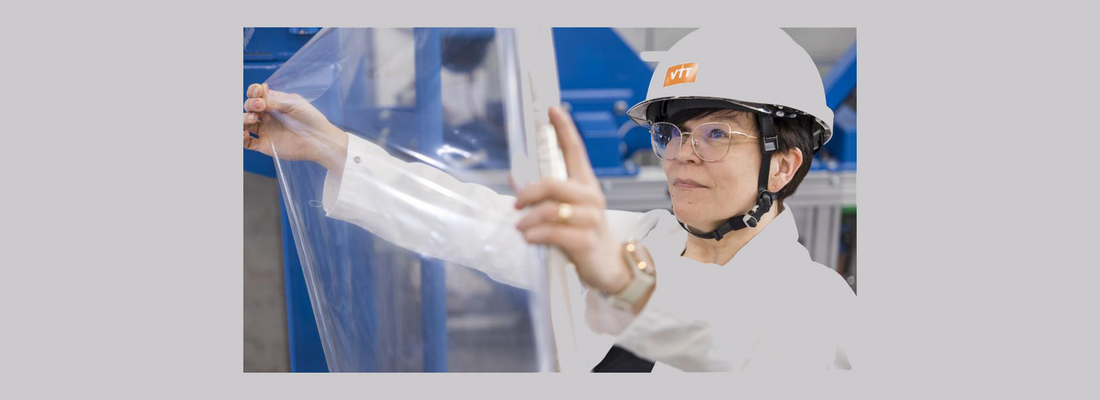Food packages fulfil their most important tasks when they protect food and minimise waste. Thin plastic films are nevertheless difficult to recycle, and they often end up in the wrong places after use.
VTT has developed a solution to the problem of plastic packaging. Regenerated or recrystallised cellulose can replace plastic film.
“We can produce transparent and flexible cellulose film. The consumer cannot distinguish between the crystal-clear material and traditional oil-based plastic. Cellulose film can resist dampness, but in nature it disappears as completely as a sheet of paper does. The product is biobased and biodegradable”, says VTT Research Professor Ali Harlin.
In addition to their protective properties, plastics are important because consumers want packages that allow them to see the product itself. However, once they have been used, many packages are sources of problems.
If a package has both paper and plastic, the consumer may wonder if it can be recycled with cardboard, or if the plastic needs to be torn off first. Some of the materials have alternating layers of fibre and plastic. Many packages are placed among mixed waste by people who cannot think of a better way of disposing of it. Plastic that ends up in a cardboard recycling bin can be removed, but the plastic usually ends up incinerated.
“The cellulose film developed by VTT can replace plastic as a more climate-friendly solution. It also makes recycling easy, as it can be placed in cardboard recycling along with other packages”, says Atte Virtanen, Vice President, for Biomaterial processing and products at VTT.
Finland remains far from the goals set by the EU for reducing the environmental harm caused by plastics. At present about 20 percent of plastics are collected, and even less ends up recycled. Under the EU target, 55 percent of plastics should be recycled by 2025.






